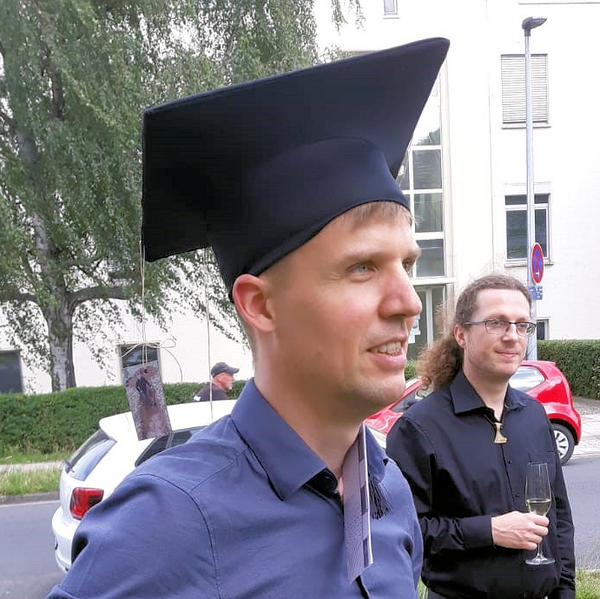
Fabian Kalks completed his doctorate on 20 July 2021 with a successful defence at the Technical University Braunschweig. His topic was the conversion of soil carbon in the subsoil, i.e. below a depth of approx. 30 cm. The work was part of the DFG research group SUBSOM (www.subsom.de), which was coordinated by the University of Bochum (Prof. Dr. Bernd Marschner) and carried out in close cooperation with other partners (including Leibnitz University Hannover, Prof. Dr. Georg Guggenberger, Technical University Dresden, Prof. Dr. Karsten Kalbitz). In an elaborate field experiment with isotopically labelled carbon, Fabian Kalks investigated whether dissolved organic matter is degraded more slowly in subsoils than in topsoils. To do this, he and his partners injected more than 300 liters of dissolved carbon at three forest sites in Lower Saxony at different soil depths and studied the fate of this organic matter. In fact, carbon was more stable in the subsoil than in the topsoil.
Some of the organic carbon in subsoils could be very old and date back to the time when the parent rock (if it is sediment) was deposited. To do this, Fabian took rock samples at four sites from depths of up to 10 meters. This was a major drilling operation together with a specialist company. Various analyses were carried out on the samples taken from the soil to the rock, including age dating. The result was that between 10 and 30% of the subsoil carbon comes from the rock. This has implications for our idea of what subsoil carbon is, where it comes from and also how to interpret 14C measurements of the subsoil.
In a third part of his work, Fabian Kalks analysed incubation data from almost 300 topsoils and subsoils. The incubations ran for 360 days and there are clear differences between topsoil and subsoil. While topsoil still had conversion of soil carbon after one year of incubation, which was only relatively slightly reduced, the conversion of subsoil carbon had almost completely collapsed. This shows that subsoils are much more dependent on the direct supply of fresh carbon from roots and dissolved organic matter to maintain their microbial activity. Fabian Kalks has used these results to develop a new concept that explains the conversion of carbon in topsoil and subsoil.

![[Translate to English:] [Translate to English:]](/media/_processed_/6/4/csm_titel_CO2Kampagne8_afeea2273e.png)
![[Translate to English:] [Translate to English:]](/media/_processed_/4/1/csm_titel_93px_CO2Kampagne8_9b0f3354d4.png)




